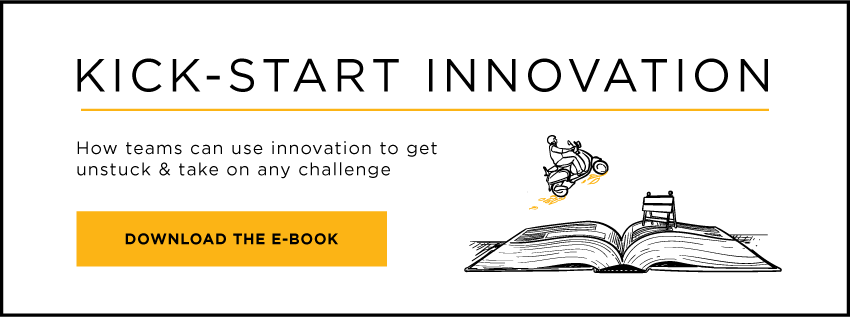 One of the first steps — and sometimes most challenging — in the design thinking process is brainstorming. The goals of brainstorming are to build enthusiasm around solving a problem, generate new ideas quickly, expand the number of ideas, get people “unstuck” and untethered to traditional solutions and to get insights from a broader and more diverse group.
One of the first steps — and sometimes most challenging — in the design thinking process is brainstorming. The goals of brainstorming are to build enthusiasm around solving a problem, generate new ideas quickly, expand the number of ideas, get people “unstuck” and untethered to traditional solutions and to get insights from a broader and more diverse group.
There are a few “rules” that help create successful brainstorming sessions. They are to defer judgement of other people’s ideas, encourage wild ideas, build on other ideas, focus on the topic, don’t talk over one another, draw ideas out visually where possible and go for many as many ideas as possible.
This isn’t always easy for most employees who are accustomed to thinking about why something can’t work rather than imagining a future where it can. But if you can get them past wanting to shut down every great idea, you can inspire them to think beyond the confines of what’s possible — which is how disruption occurs.
Even small changes in the makeup of the team, leadership, and goals of a brainstorming session can help push your creative output to new levels. Here are few small changes you can make today to see improvements right away.
-
Put someone in charge. A brainstorming session with no leader will quickly devolve into chaos. The best facilitators will be intimately knowledgeable about the goals of the project, and have the enthusiasm to pull the team out of its comfort zone. They also need to be confident enough to keep everyone focused on the task at hand and able to rein in the chaos when they start shouting over each other.
-
Create a timebox and expected outcomes. Putting a time-limit on creativity and setting expectations that everyone must contribute creates a sense of urgency, and reminds people that they don’t a lot of time to get all their answers recorded. If the team gets bogged down in one idea, remind them that the clock is ticking, and they can work out the details later.
-
Set goals and define what’s out of bounds. Giving brainstormers a framework for their ideas will prevent them from generating brilliant solutions for problem you are not currently addressing. The more specific you are the more success you will have keeping the team on topic.
-
Give them homework. Providing brainstormers with a few leading questions or brief assignments related to the project will put them in the right frame of mind, and give them ideas to share as soon as the session begins.
-
Encourage them to build. Sometimes the best idea emerges from another idea. “Building” on a teammates suggestion can take a good idea in new direction and make it even better.
-
Draw, play, snack. Providing brainstormers with toys, markers, and snacks will make the session more fun, and encourage them to engage different parts of their brains. Encouraging teammates to draw their ideas, or giving them creative mini assignments can push them in different directions and help show others their ideas – even if they claim that they can’t draw.
A structured and properly executed brainstorm can be tremendously valuable to finding solutions to complex business challenges. Be prepared to lean in to the experience and let the ideation begin.
Learn how to enable innovation skill-building at scale here or download our free ebook Kickstart Innovation: A Guide for Organizations.
